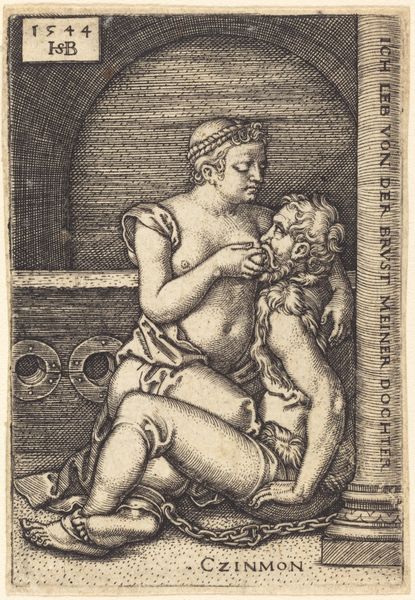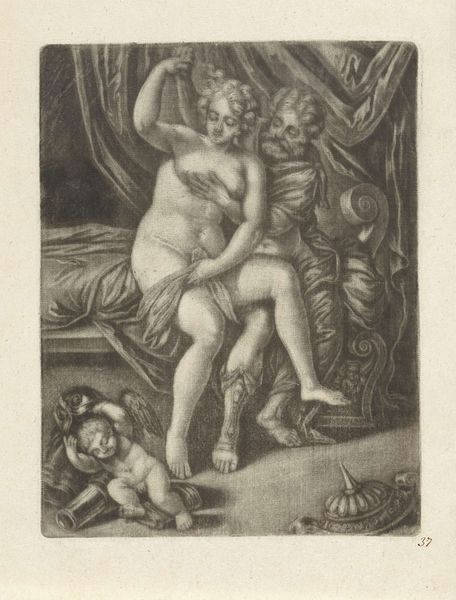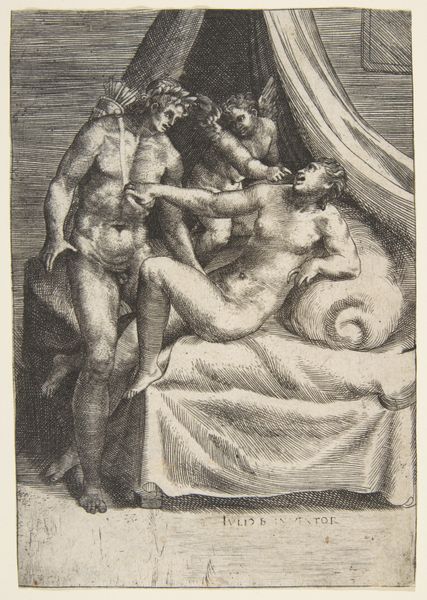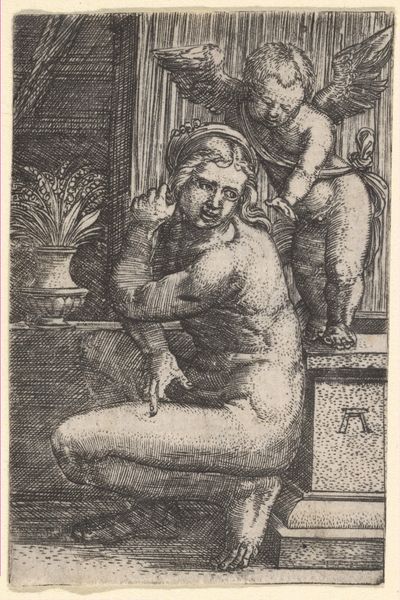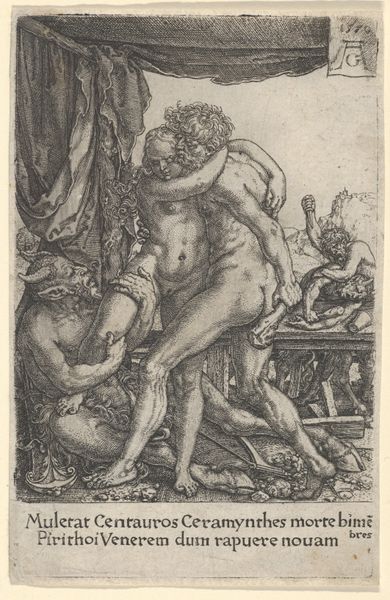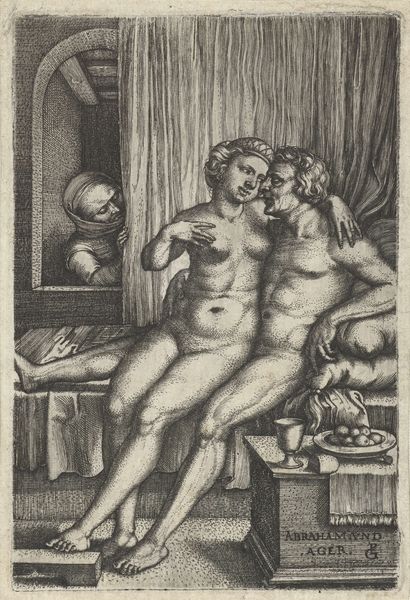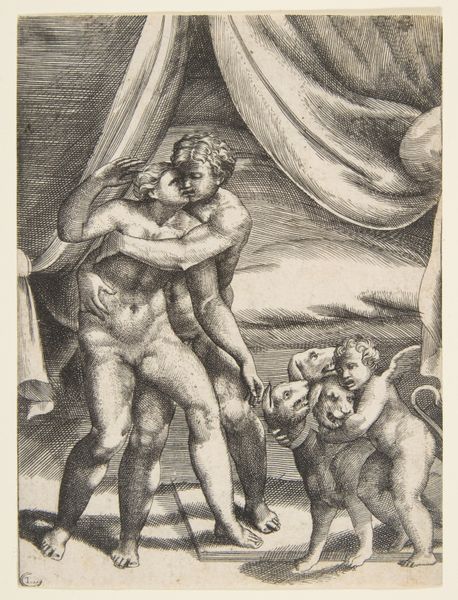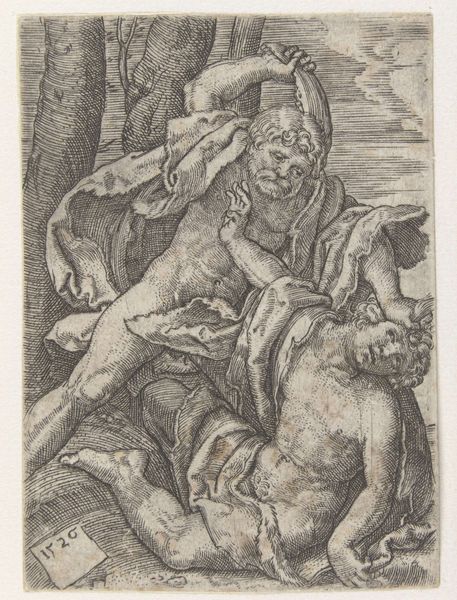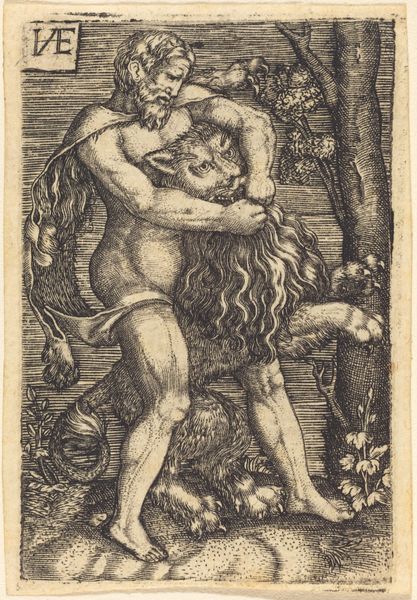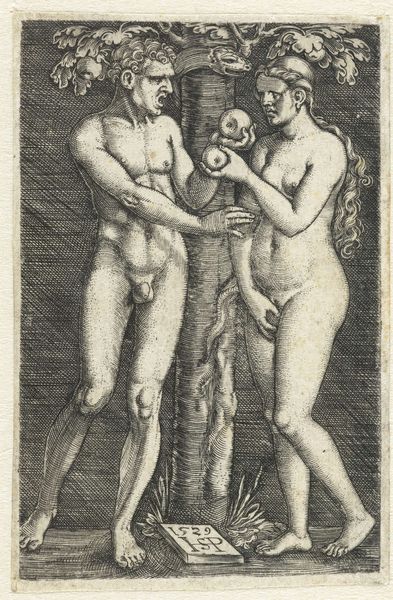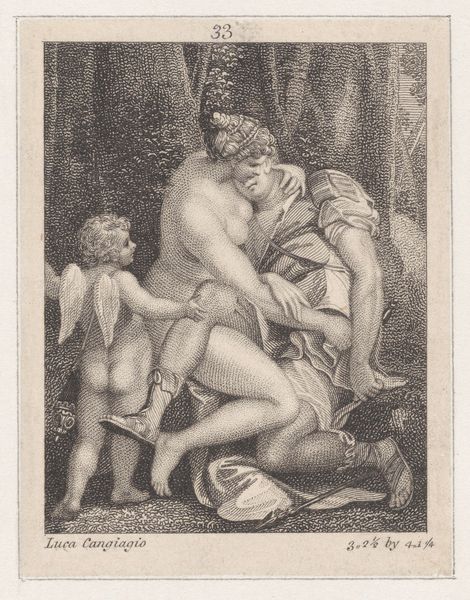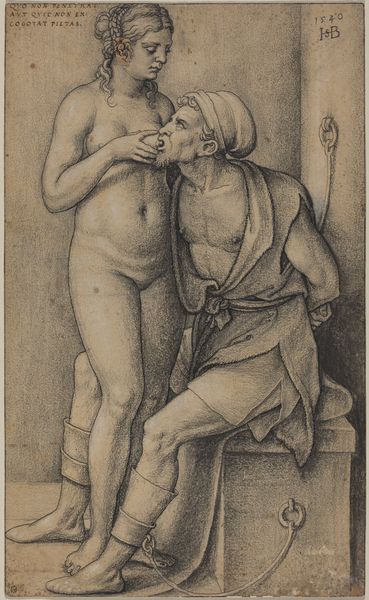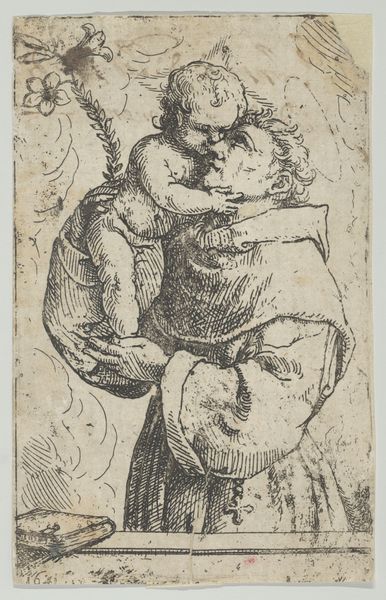
Dimensions: Sheet: 2 3/16 × 1 1/2 in. (5.5 × 3.8 cm)
Copyright: Public Domain
Barthel Beham made this tiny print, Cimon and Pero, around 1525, using a technique called engraving. This is an intaglio process, which involves cutting lines into a metal plate, inking the surface, and then wiping it clean so that ink remains only in the incised lines. The plate is then pressed onto paper. The resulting image is characterized by great precision, made possible by the skilled hand of the engraver. Here, the contrast between light and shadow is especially striking. This is achieved by varying the density and depth of the engraved lines to create tone and texture. The labor-intensive process emphasizes the skill of the artist. Engraving was a key technology for disseminating images widely during the Renaissance. Prints like this blur the boundary between art and craft, serving both as works of art in their own right, and as tools for communication in a rapidly changing world.
Comments
No comments
Be the first to comment and join the conversation on the ultimate creative platform.
